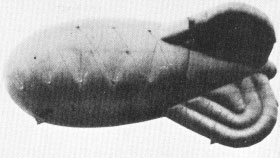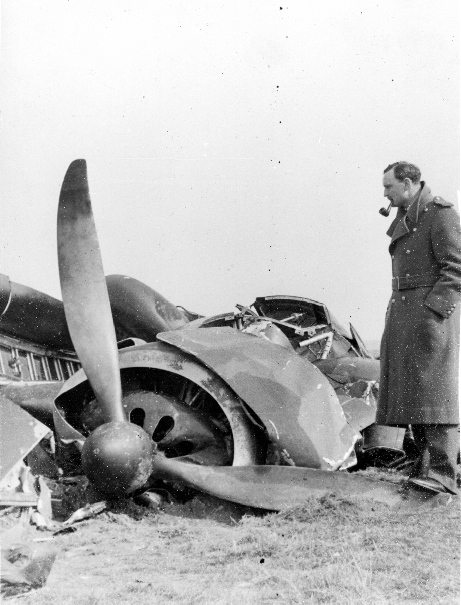 Click
for Site Directory
Click
for Site Directory Click
for Site Directory
Click
for Site DirectoryThis officer had an incredible career prior to, during and after WWII.
In summary, and based on his recorded Gazetting:
He was granted a short service commission as a Pilot Officer on probation effective with seniority 12th October 1928 and published in The Gazette 14th October 1928.
His rank was confirmed as a Pilot Officer 12th October 1929 and published in The Gazette 22nd October 1929.
He was promoted to Flying Officer on the 12th April 1930 and published in The Gazette 30th May 1930.
He was transferred to the reserve as a Class A Flying Officer 12th October 1933, and published in The Gazette 17th October 1933.
He was promoted to Flight Lieutenant on the 1st April 1937 with seniority 1st April 1936 and published in The Gazette 26th October 1937.
He was transferred from Class A to Class C on 12th October 1937 and published in The Gazette 18th January 1938.
He was made a Squadron Leader (Temporary) on the 1st September 1940 and published in The Gazette on the 20th September 1940.
He was awarded the Air Force Cross on the 1st January 1941 and published in The Honours List in The Gazette 1st January 1941.
He was promoted from Squadron Leader (Temporary ) Wing Commander (Temporary) on the 1st March 1942 and published in The Gazette on the
27th March 1942.
He was granted the rank of Wing Commander (war subs) on the 28th July 1945 and published in The Gazette on the 5th October 1945. Also in the
Supplement to The London Gazette on the 12th October 1945.
He was granted a commission with the rank of Squadron Leader (Permanent) on the 1st September 1945 with seniority 1st January 1941 and published in The Gazette on the 10th June 1947.
He was promoted to a rank of Wing Commander (Permanent) on the 1st November 1947 with seniority 1st October 1947 and published in The
Gazette on the 28th October 1947.
His main connection with Balloon Barrage was the fact that he pioneered some of the secret work that took place to try and find the best way to
configure balloon cables to stop an aircraft and since the Germans had balloons as well he sought to find a way to stop balloons from bringing
allied aircraft down. This he achieved by deliberately flying aircraft into Balloon cables of different sizes and types with balloons where the
explosive charges were set at different positions and timings, all very much touch and go, science with grave risks for the pilot. I have read and
have copies of the formerly secret documents relating to the trials carried out by "Tiger" Hawkins and they make quite scary reading on times!
I recently had contact with one of his sons who was kind enough to provide me with a picture and some anecdotes on his father. It is always
exciting when I get contacted by relatives of people who I have researched as I am always surprised at how much more the family can tell me.
"Tiger" Hawkins was survived by three sons,
Peter Hawkins, Air Vice-Marshall David Hawkins CB LVO MBE DL, and Michael Hawkins.
Below is a small extract from a book entitled “Testing Aeroplanes in Wartime” by Alan Wheeler. This chapter is devoted to the experiences of
pilots who have tested Barrage Balloon cables by flying into them. Although Pawlett is not specifically mentioned, the airfield at Churchstanton
is, and it was here that Tiger Hawkins was based doing the experimental work.
The chapter is too long to quote here in full but I thought that you might like to read this extract.
“the technique for this test work had been worked out by a sturdy band of select pilots who had to do it for the first time when very little was
known about the effect cables would have on the aircraft structure. As things turned out the effect was generally not serious and it was
surprising how easily a real balloon cable could be broken by an aircraft wing so long as the aircraft was flying fast. This was just one of the
valuable pieces of information which came out of these experiments. But there always was a definite element of risk as was brought home to us
abruptly when a Wellington was flown into a balloon cable by Squadron Leader (“Tiger”) Hawkins in the course of normal test work when he was
in command of the Research Flight.
On that occasion the first warning he had that anything had gone wrong was that a lot of dust and bits of fabric and wood were blown forward into
the cockpit from the rear part of the fuselage. The Wellington then pitched upwards uncontrollably. Hawkins was still completely unaware that
the whole tail unit and back fuselage had been broken off by the sudden yaw induced by the balloon cable drag on the outer wing. The next
moment the Wellington did an equally sudden pitch downwards which was so violent that Hawkin’s straps were broken and he was thrown
forwards and downwards into the bomb-aimer’s compartment amongst all the debris which had come from the broken back end. Hawkins was, of
course, alone in the Wellington since there was no reason to carry unnecessary passengers on the rather risky tests. He remembered struggling to
get back to the pilot’s cockpit where the escape hatch was situated, but the forces due to the Wellington’s manoeuvre were such that he could
not move until a sudden change in manoeuvre threw him back on to his seat. From this position he saw a means of egress and baled out. He first
thought that he had gone out through the top escape hatch but subsequent investigation suggests that he actually went out through the pilot’s
side window and thus passed through the propeller! Fortunately he had shut both throttles at the first intimation of trouble, and the various
antics of the Wellington had probably contributed to stopping the engines altogether.
It was subsequently established that this accident was due to unforeseen forces induced on the Wellington with a slight increase of speed of
impact on the balloon cable. We learnt a lot. There are those people who hold that such troubles should be foreseen but if we could foresee all
the forces imposed on an aircraft every time we increase the speed slightly there would be no need for test work at all.”
Mike Hawkins has shared with me the anecdote of his father in who 1942 along with the Air Defence Investigation Department stationed at Exeter
was, after a bombing raid on the airfield, moved to Churchstanton not very far away. (I believe that this was where Pawlett is now in Somerset.)
When the flight was moved every packing case and anything else required was labelled Church Fenton to confuse the possibility of enemy spying.
This did once lead to his Father being posted as missing when flying to Churchstanton as after some hours he did not arrive. The unit called Mrs
Hawkins and told her that her husband was missing and she had to tell them not to be so silly as he was sitting next to her with a beer in one hand
and a pipe in the other!!
On 24th March 1942 Vickers Wellington P9210 was flown into a barrage balloon cable by Sqn. Ldr. C.R. "Tiger" Hawkins and he had to bail out. he
survived and later went to inspect his crashed plane and had his photograph taken as a memento.

"Tiger" Hawkins AFC, inspects his wrecked aeroplane while calmly smoking his pipe.
(Picture Courtesy of the Hawkins Family)
One thing is certain this was an individual who clearly was a brave pilot with unique
qualities, someone who knew his aircraft and its characteristics so well, that flying
it into a dangerous balloon cable was a fairly normal event.
To learn more about the work on Balloon Cables at Pawlett
Click Here: Pawlett and Balloon Cable Experiments